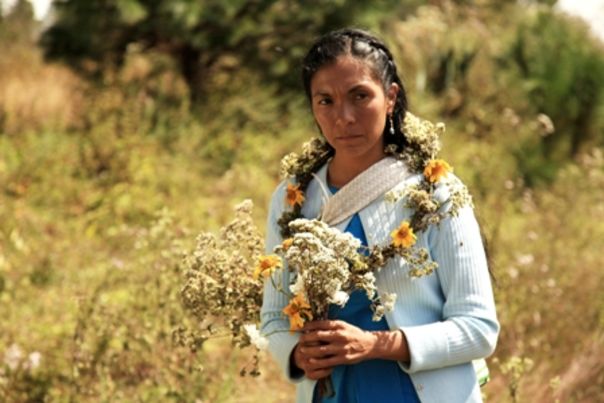LA TIRISIA
Israel Ruiz Arreola of the Talents Press 2014 reviews Jorge Pérez Solano's LA TIRISIA

Jorge Pérez Solano's LA TIRISIA
Amid abundant bushes and giant cacti bodies at the semiarid region of Zapotitlán, Puebla, LA TIRISIA (Mexico, 2013) takes place Jorge Pérez Solano´s second feature film from Mexican director. A story compound of metaphors which safely keep a close relationship with nature, society and the individual, driven by the experience of two women facing the dilemmas that are involved with becoming a mother in a community buried with in itself. Divided into two catholic periods that elapse between the months of May to November, the stories of Cheba (Adriana Paz) and Serafina (Gabriela Cartol) start with a common point and finalize in opposite directions but they do meet in the vortex of their needs and desires as women.
In their own ways, each one faces the violence of a machismo that falls on them, such as heavy wind gusts that constantly assail with the desert dust. Cheba, the most experienced at motherhood with two children on her lap, seeks to satisfy the lack of pleasure in which it is mired by the absence of her husband. She conceives that motherhood to be a natural consequence of that search, with no other choice but to accept it. At the other extreme, Serafina constantly collides with the rejection of her family, and her search complies with the enjoyment feeling to spread salt all over his body. Both share the exploration of sensations limited by the environment and themselves.
From the male side of the story, the film presents three views; on Silvestre (Gustavo Sánchez Parra) we find the figure of a man who remains unwilling, with a lack of desire; "flying low", while watching the planes in the sky; Carmelo, Cheba´s husband (Alfedro Herrera) is the man without compromise, who abandons, demands and rejects. In other hand, Canelita (Noé Hernandez) it’s the only character who posses what the other don’t: affection and consciousness. In Mexico, homosexual people are called discriminatory fairy. The film plays with the meaning of the concept because this character represents the spirit (the butterfly that flies) that is mention at the introduction of the film. He is whom is more in contact with is environment and the people around him. That is the reason why Cheba´s children (in their childhood) are naturally more fluent when are with him.
We also found several glimpses of social criticism in the Film by the director from de state of Oaxaca: the dead priest inside the church suggests the abandonment of the religious institution, the candidate who goes through the village without stopping for the people is always an unfulfilled promise of a political institution, and the circus show, that one which is hidden in makeup and color drags the community to the public square as darkness falls on them.
With a photography that captures the sultry and decadent air that one can breathe in the village, LA TIRISIA it is the portrait of a part of the Mexican idiosyncrasy, which is inhabited by characters without spirit immersed in suffering waiting for someone «to pull their feet » (a Mexican said that invokes an spirit or spirits that come back from beyond to disturb someone by pulling their feet while sleeping). Zapotitlán is a microcosm of what is played on a larger scale in the Mexican territory, the one that watches the future arrive in plastic bags, gets stuck in the cactus and seeks to escape in a wind travel.
By Israel Ruiz Arreola

